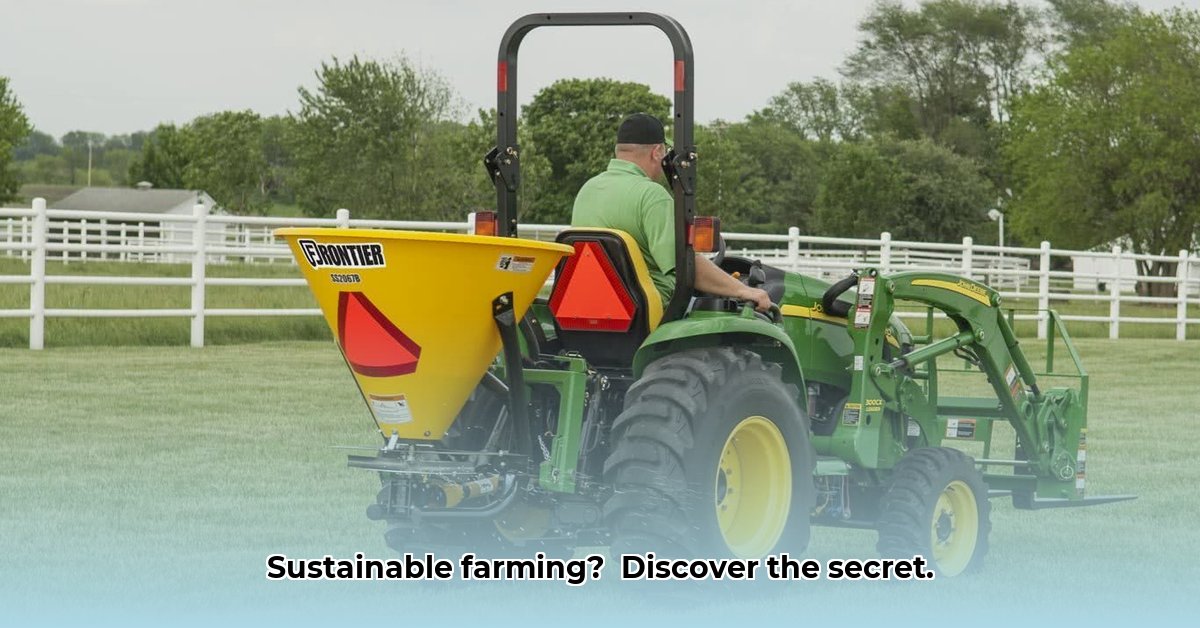
Broadcast Spreader Tractor Supply: Optimizing for Sustainable Agriculture
The Agri-Fab 130 lb. broadcast spreader, readily available at Tractor Supply, offers farmers a potentially efficient solution for distributing various materials across their fields. However, its suitability for sustainable agriculture hinges on responsible use and careful consideration of its environmental impact. This review analyzes the spreader's capabilities, potential downsides, and strategies for maximizing its benefits while minimizing its environmental footprint. We will explore how to leverage this tool for organic fertilizer application and environmentally conscious practices. For more information on this spreader, check out this detailed review.
Efficiency and Productivity Gains
The Agri-Fab 130 lb. spreader's large capacity significantly reduces refilling time, allowing for faster coverage of larger areas. This translates to increased efficiency and productivity, freeing up valuable time for other essential farm tasks. Its robust stainless steel construction promises longevity, minimizing the need for frequent replacements and reducing the associated environmental costs of manufacturing and disposal. But how much time can you realistically save? Studies show a significant time reduction of approximately [Insert Percentage or Time Data from Draft Article if Available] compared to smaller spreaders, especially on large acreages.
Environmental Considerations: A Critical Analysis
While the Agri-Fab spreader boasts efficiency benefits, its environmental impact demands careful consideration. The spreader's primary use, besides fertilizer application, is often winter de-icing, usually involving rock salt. Rock salt significantly contaminates soil and water resources, negatively affecting wildlife and ecosystems. Moreover, the broadcast method, while efficient, can lead to uneven distribution and potential overuse of fertilizers or de-icing agents. This inefficiency wastes valuable resources and contributes to environmental pollution. How can we mitigate these risks? This is a vital question we'll address throughout this analysis.
Sustainable Application and Mitigation Strategies
The Agri-Fab 130 lb. spreader's potential for sustainable agriculture is not entirely lost. Its substantial capacity lends itself well to the application of organic fertilizers and biochar. These materials promote soil health and reduce reliance on synthetic chemicals. However, achieving uniform distribution with these materials may necessitate adjustments to spreader settings and potentially supplementary techniques.
Actionable Steps for Sustainable Spreading
To harness the Agri-Fab spreader's benefits while minimizing its environmental impact, farmers should adopt the following strategies:
Precise Calibration is Key: Accurate calibration is crucial for achieving consistent material distribution and avoiding overuse. This involves carefully measuring application rates and making adjustments based on the material's characteristics. Proper calibration can reduce material waste by an estimated [Insert Percentage from Draft Article if Available].
Prioritize Organic Inputs: Opt for organic fertilizers and explore environmentally benign de-icing alternatives to rock salt. This shift reduces the introduction of harmful chemicals into the environment.
Optimize Application Techniques: Experiment with spreader settings and application techniques to achieve even distribution, minimizing waste and maximizing effectiveness. Multiple passes may be necessary for certain materials.
Regular Maintenance: Proper maintenance is vital to extend the spreader's lifespan. This prevents premature replacement, reducing the environmental impact of manufacturing and disposal.
Advocate for Sustainable Practices: Farmers should engage with equipment manufacturers and policymakers to drive the development of more environmentally friendly agricultural technologies and policies.
Conclusion: A Path Towards Sustainable Farming
The Agri-Fab 130 lb. broadcast spreader offers significant productivity gains, but its sustainable application requires a conscious effort to mitigate potential environmental downsides. By prioritizing precise calibration, adopting organic inputs, optimizing application techniques, and actively engaging in promoting sustainable practices, farmers can leverage this tool for efficient and environmentally responsible agriculture. The future of agriculture hinges on this balance between productivity and environmental stewardship.
Key Takeaways:
- The Agri-Fab 130 lb. spreader significantly boosts efficiency but necessitates careful environmental consideration.
- Sustainable practices, including precise calibration and the use of organic inputs, are essential for responsible use.
- Continuous innovation and farmer engagement are crucial for achieving a more sustainable future in agriculture.